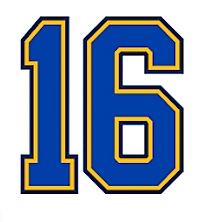
When we consume information, it helps to be skeptical. It’s a good idea, of course, to be dubious of anything that comes from extremist organizations. Not just their “fake news” but also items that seem plausible.
We should also be skeptical of news and information we receive from the “mainstream media.” Whether it’s a hard news report from Washington or a puff piece in the neighborhood paper, numerous factors determine the content that’s delivered.
Questions worth asking: Is the reporter a friend or nemesis of his/her source? Did the subject of an upbeat item spend ad money on the outlet? Did an editor remove a key element of the piece because somebody took her/him out to dinner? Did a PR person offer an exclusive scoop in exchange for a prominent placement? We can’t know the answers, so everything we read, see and hear should be subject to that healthy skepticism.
No matter the source of information, it’s important to consider that there is no such thing as absolute objectivity. All of us are subject to influences of our upbringing, our schooling, our past and current professional relationships, as well as personal friends and acquaintances.
Mass gullibility is not a new thing. Mistrust of news media is not a new thing. Nor is mistrust of elected officials. (Remember the Maine!)
It’s often necessary to get info from multiple sources in order to obtain the full scope of an issue. The New York Times may play up a certain aspect of global warming, for instance, whereas the Wall Street Journal may try to poke holes in the NYT’s version of facts. The exact truth may lie somewhere between their respective takes.
As a consumer of information, you should be able to know what is being shared as factual information and what is labeled as comment or opinion. Print and online outlets generally do a good job of differentiating. Broadcast and cable outlets sometimes fail to make clear which is which.
In these days of extreme polarization, an open mind can help you get the full picture. Certainly, many individuals will always be steadfast in their beliefs and their prejudices. Some people will believe anything they hear from conservative-leaning outlets and others will put full trust into anything they get from liberal-leaning outlets.
Wherever you receive your information, be it a trusted source or one you view with caution, maintain your healthy skepticism as you determine your own version of the facts. As they used to say on the X-Files, the truth is out there. You just have to find it.
For more on determining the validity of news we receive, you may want to check out these thoughts from NPR Morning Edition anchor Steve Inskeep. Click HERE to link to his article. Even if you perceive NPR to have a particular agenda, you may find his “finder’s guide for facts” useful.
(photo credit: Bruno Meyer Photography; http://www.flickr.com/photos/55293868@N08/31907319405; http://photopin.com; https://creativecommons.org/licenses/by-nc-sa/2.0)






Random Media Notes
Photo credit: squidsoup.org. http://www.flickr.com/photos/8191354@N04/8704884335, via http://photopin.com, https://creativecommons.org/licenses/by-nc-nd/2.0/